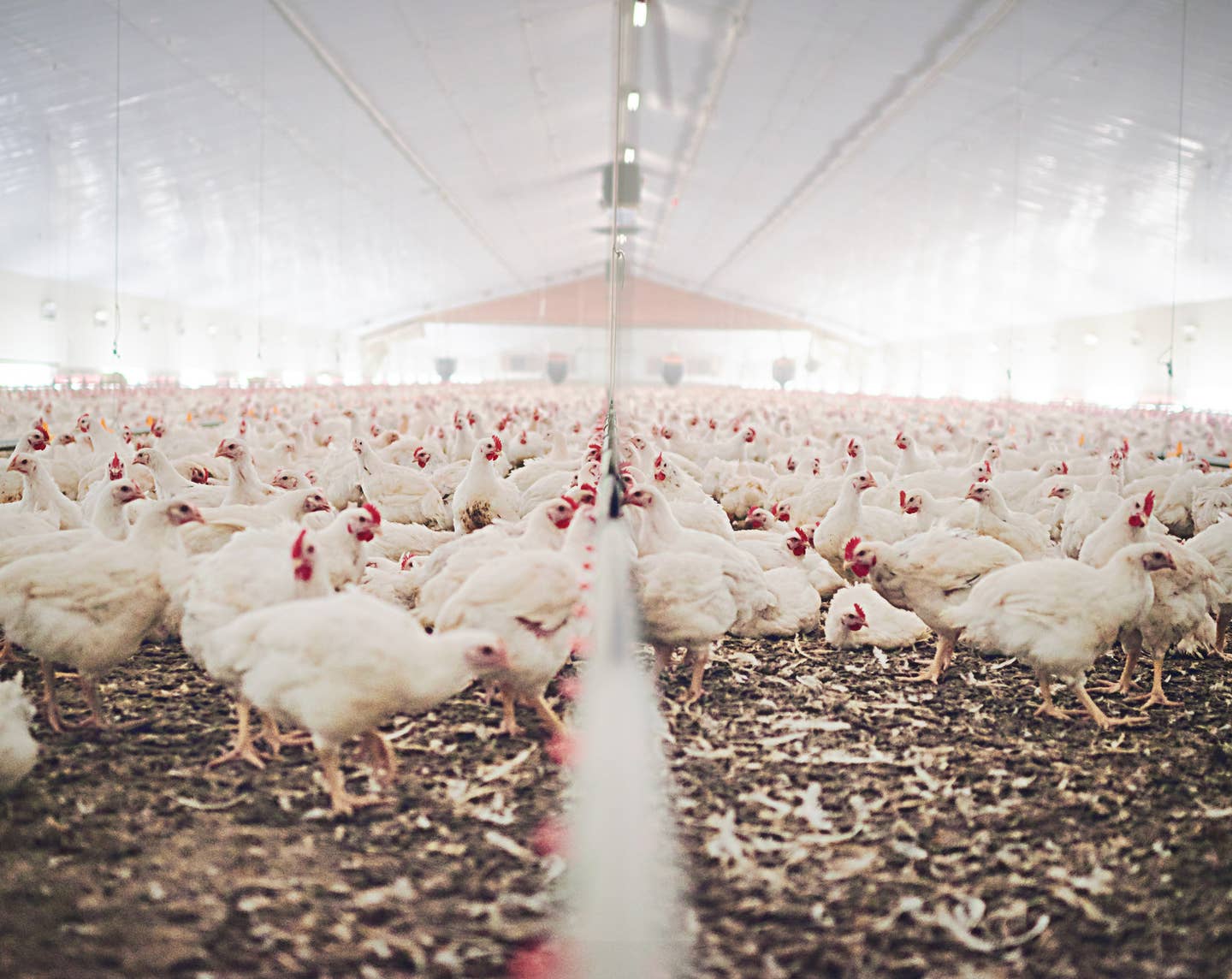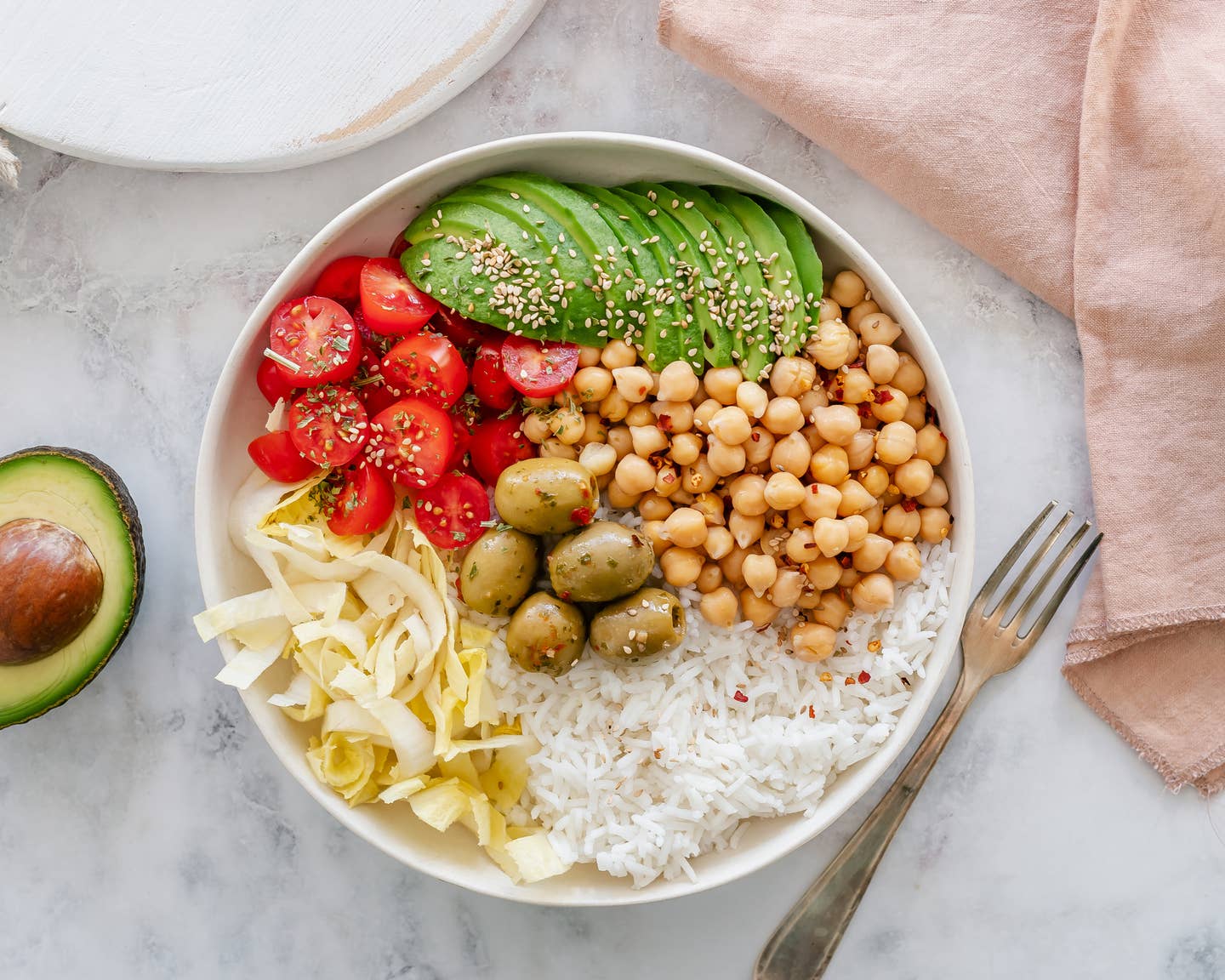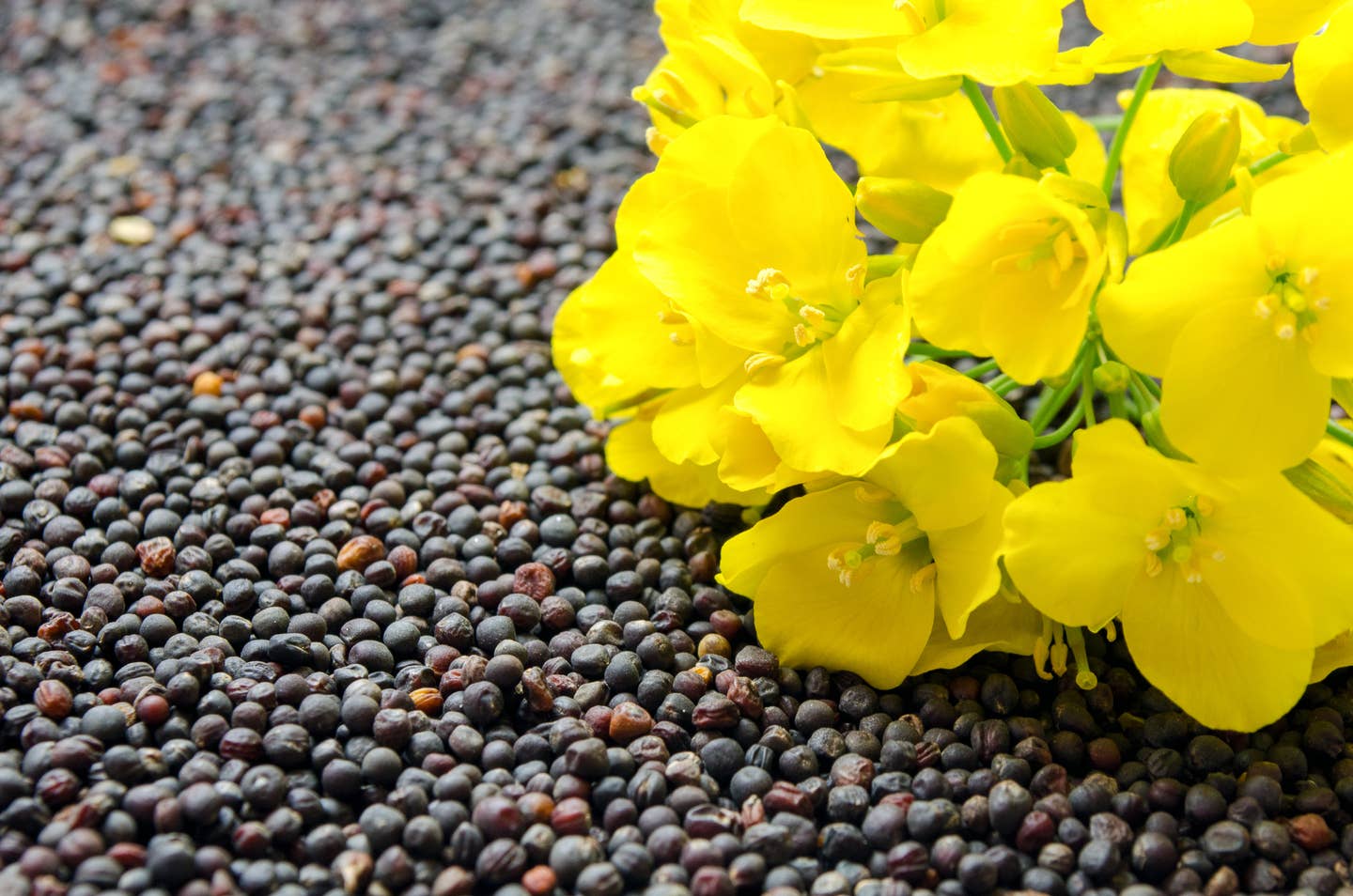
Vegan Protein Made From Air? It’s Not as Crazy as It Sounds
It may be April, but we promise we're not fooling you with this news: Your next alternative protein could be made from air. If that sounds crazy, let us explain. Using an intricate process that compresses recycled carbon emissions, the food technology start-up Air Protein is making vegan steak, chicken, pork, and seafood, literally out of thin air. Air Protein boasts that its groundbreaking protein is carbon negative, massively scalable, and requires fewer resources to make than traditional protein.
"Air fermentation begins with the same building blocks that all plant life needs to grow – air, water, and renewable energy. Elements of the air are whisked together with our cultures until they produce protein within a matter of hours – a process similar to how yogurt, cheese, and wine are made," according to the message on Air Protein's website. "The protein that the cultures produce is harvested and purified, then dried to remove water. The result is a super-clean, protein-packed flour — nutritious, versatile, and ready to be turned into any meat."
"Finally, in a process much like the way you might turn flour into pasta, we apply culinary techniques to Air Protein flour to create textures and flavors as we work to give air meat the same great taste and texture as traditional chicken, beef, pork, and seafood."
If this sounds far more futuristic than our current food industry innovations, consider this: Vegan protein alternatives are already being made from abundant resources such as duckweed, green leaves and hemp as well as fungus and kelp. By this logic, using CO2 emissions in tandem with water and energy to create a fermented flour-like base isn't so far-fetched.
More sustainable than alternatives
One of the benefits of this unusual technique is how planet-friendly it is: Air Protein requires zero arable land to produce. All that is required is recycling purified CO2 and other elements of the air, renewable energy, water, and minerals, and then feeding those to a culture to nourish and grow protein, involving no greenhouse gas emissions in the process.
Air Protein can be made in a sustainable and efficient timeframe, according to the manufacturers. "Air meat uses 524,000 times less land and 112,000 times less water per kg than traditional meat production. It also takes considerably less time. For example, it takes two years to make a traditional steak, from the time a cow is born, fed, and grown to when it is processed. Air Protein, on the other hand, can be produced in a matter of hours or days."
Air Protein was founded in 2019 by CEO Dr. Lisa Dyson and already has superpowered names backing the brand, winning awards including the SXSW Interactive Innovation Award, the Davos World Economic Forum Technology Pioneer Award, and receiving nearly 33 million dollars in investments during its Series A funding round led by ADM Ventures, Barclays, and Google Ventures (GV).
Although Air Protein is not yet available at retailers across the United States, the brand promises consumers that the launch will be soon, as the company scales up production to meet expected demand. For announcements on this timeline, follow Air Protein on Instagram.
For more plant-based products and happenings, explore The Beet's News articles.
Top 10 Sources of Plant-Based Protein According to a Nutritionist
1. Seitan
Protein: 21 grams in ⅓ cup (1 ounce) Seitan isn’t as popular as other proteins, but it should be! Made from wheat gluten, its texture resembles ground meat. It’s often used in pre-made veggie burgers or meatless nuggets. Seitan has a savory taste, like mushrooms or chicken, so it works well in dishes that call for an umami flavor. With a hearty texture, seitan can be the star of practically any vegan main dish. Add it to stir-fries, sandwiches, burritos, burgers, or stews. Like tofu, seitan will take on the flavor of any marinade or sauce.
2. Tempeh
Protein: 16 grams in 3 ounces If you like a protein with a bit of bite, add tempeh to your list. Made from fermented soybeans, tempeh has a slightly nutty flavor and is pressed into a block. Most varieties include some sort of grains, such as barley or millet. Not only is tempeh a plant-based source of protein, but the fermentation process also creates good-for-your-gut probiotics. You can cut tempeh right off the block and use it as the base for a sandwich or pan-fry it with some sauce. Or, crumble, heat, and make it the star of your next taco night.
3. Lentils
Protein: 13 grams in ½ cup cooked Lentils come in multiple varieties--red, yellow, green, brown, black. Regardless of the type lentils are small but mighty nutritional powerhouses. They pack a good amount of protein as well as iron, folate, and fiber. When cooked, brown lentils retain their texture and can be the base for a grain bowl or make a hearty substitute for ground meat in meatballs, lasagna, tacos or Bolognese. Red lentils are a bit softer and make a nice add-in for a hearty soup, chili, or stew.
4. Hemp Seeds
Protein: 10 grams in 3 tablespoons Hemp seeds are a tender and nutty seed, derived from the hemp plant. They contain good amounts of omega-3s, iron, folate, magnesium, phosphorus, and manganese. They are also a solid source of both soluble and insoluble fiber, which helps to keep your digestive tract healthy and humming. Because they pack a double whammy of protein and healthy fats, hemp seeds can help satisfy hunger, preventing those embarrassing stomach growls as you slog your way to your lunch break. Add them to your morning smoothie or sprinkle them on top of yogurt, oatmeal, or even a salad.
5. Tofu
Protein: 9 grams in 3 ounces (⅕ of a block) Made from coagulated soybeans, tofu is the most popular plant-based protein. Soy is one of the only meatless "complete" proteins, meaning that it contains all of the essential amino acids that the body can’t make but needs for muscle and immune function. With 15% of your daily calcium needs, tofu is also a good replacement for dairy.
6. Edamame
Protein: 9 grams of protein in ½ cup This sushi appetizer is a nutrient powerhouse, so eat it anytime. Edamame is really just another name for soybeans in their pods. Let’s list off some stats--a small ½-cup serving of edamame has 9 grams of protein, 15% of your daily vitamin C, 10% of your daily iron and 16% of your daily fiber. Keep a bag of edamame in your freezer to serve as a fun-to-eat side dish or opt for the shelled variety to toss into salads or a grain bowl.
7. Quinoa
Protein: 8 grams per cup (cooked) Quinoa is an ancient grain and since it's gluten-free a great choice for anyone avoiding gluten. Add it to your burger recipe to create filling texture, or instead of meat in your taco or burrito. Quinoa is among the healthiest foods on the planet, delivering phytonutrients that have anti-inflammatory qualities, so keep it in your pantry for any meal that needs a filling grain. Just remember to soak it and rinse before cooking to get rid of any bitter taste.
8. Black Beans
Protein: 7 grams in ½ cup (canned) Eating beans on the regular might as well be a prerequisite for a plant-based diet. Not only are canned black beans inexpensive, but they also contribute 10% of your daily iron and 25% of your daily fiber to your diet. For less than $1 a can, beans can be the star of tacos, quesadillas, salads, soups, burgers, or dips.
9. Amaranth
Protein: 6 grams in ⅔ cup (cooked) Chances are you’ve never cooked amaranth. But you should, since this tiny, gluten- free grain is packed with almost 30% of your daily fiber and 20% of your daily iron. Cook it like a traditional grain to yield a soft, porridge-like texture. Many people add amaranth to other a hot breakfast cereal mixture, like oats and quinoa. It also pops like popcorn. Toss it in a pot with some oil and wait for it to pop up into a nutritious snack.
10. Peas
Protein: 5 grams in ⅔ cup If peas were one of your most hated veggies as a kid, it’s time to give them another chance. These green beans are a great low-calorie protein to keep in your freezer. Sure, they don’t always taste great when steamed or microwaved (who wants to eat mushy, overcooked peas?), but they do blend well into a yummy puree that can be slathered on toast. To amp up the flavor, add some lemon juice or mint to your mix before you blend.
More From The Beet






